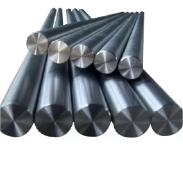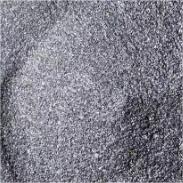Title: Tarnish Troubles? Your Quick Fix Guide for Plated Metal
(How To Get Rid Of Tarnish On Plated Metal)
That beautiful plated necklace. Your favorite decorative picture frame. The classy candlesticks on the mantel. One day they gleam, the next they look dull, maybe even dark and spotty. That unwelcome visitor is tarnish. Don’t panic. Getting rid of tarnish on plated metal is easier than you think. This guide explains the science simply and gives you safe, effective methods to restore the shine without harming the delicate plating. Let’s banish that ugly gunk.
1. What Exactly Is Tarnish? The Science of the Ugly Film
Tarnish isn’t dirt. It’s a chemical reaction happening right on your metal’s surface. Think of it like rust, but for silver, brass, copper, and other non-ferrous metals. Air contains oxygen and often tiny bits of sulfur compounds (from pollution, eggs, rubber bands). These elements react with the metal atoms. This reaction creates a new layer on top. This layer is tarnish. It starts as a slight yellowing or dullness. It can deepen into brown, black, or even blues and greens. Plated metal has only a thin layer of precious metal (like silver or gold) over a base metal (like brass or nickel). Tarnish attacks this top layer. If ignored, it can eat through the plating, exposing the ugly base metal underneath. Spotting tarnish early is key. Look for loss of shine, discoloration, or dark spots. It feels different too – slightly rougher than the smooth, clean metal.
2. Why Plated Metal Needs Extra Care Against Tarnish
Plated metal is beautiful but vulnerable. That thin layer of silver, gold, or rhodium is what gives the item its look and value. Tarnish directly attacks this precious coating. Base metals underneath (like copper or nickel) often tarnish faster than pure silver or gold. If the plating gets scratched or worn thin, these reactive base metals can actually speed up tarnishing at the weak spot. Cleaning plated metal wrong is a big risk. Harsh scrubbing, abrasive cleaners, or strong acids can easily strip off the plating. Once that plating is gone, you can’t get it back. You’re left with the base metal showing, which usually looks cheap and tarnishes quickly. Protecting the plating isn’t just about looks. It protects the item from faster decay. Treat plated pieces gently. They need smarter cleaning, not harder cleaning.
3. How to Remove Tarnish Safely: Gentle Methods That Work
Forget harsh chemicals and steel wool for plated treasures. Gentle is the rule. Here are safe, proven methods:
* Mild Soap and Warm Water: Often the first step. Mix a few drops of dish soap in warm (not hot) water. Use a super soft cloth, like microfiber, or a soft-bristled toothbrush *only* for intricate grooves. Gently wipe the item. Rinse thoroughly under warm water. Dry completely with a soft towel. This removes surface grime and might fix light tarnish.
* Baking Soda Paste: Great for silver plate. Make a paste with baking soda and a little water. It should be thick, not runny. Apply it gently with a soft cloth or your fingers, rubbing only in the direction of the grain (if visible). Rinse very well. Dry completely. This is mildly abrasive, so be gentle. Test on a small hidden area first.
* Specialized Polishing Cloths: These cloths (like Sunshine cloths) are treated with a very mild polish and tarnish inhibitor. They are excellent for light to moderate tarnish on silver and gold plate. Rub the item gently with the cloth. No water needed. The polish stays on the cloth, not your item. They are convenient and safe for frequent light cleaning.
* Commercial Plated Metal Cleaners: Choose a cleaner specifically labeled safe for plated metals. Read the instructions carefully. Apply sparingly with a soft cloth. Rinse if required. Dry thoroughly. Avoid anything labeled “dip” or “electrolytic” for plated items.
Important Rules: Always test any cleaner on a tiny, hidden spot first. Use minimal pressure. Rinse extremely well. Dry completely. Store properly after cleaning.
4. Everyday Applications: Keeping Your Plated Treasures Shiny
Plated metal is everywhere in our homes. Knowing how to care for it keeps your things looking great longer:
* Jewelry: Rings, necklaces, bracelets, earrings (especially costume jewelry) are often plated. Clean gently with a polishing cloth. Remove before swimming, showering, or using harsh cleaners. Store in airtight bags with anti-tarnish strips.
* Home Decor: Picture frames, candlesticks, figurines, vases, drawer pulls. Dust regularly with a soft cloth. Use the mild soap or baking soda methods for cleaning. Avoid placing near fireplaces (sulfur) or kitchens where eggs are cooked.
* Tableware: Silver-plated cutlery, serving dishes, teapots. Hand wash with mild soap and water. Dry immediately. Avoid the dishwasher – harsh detergents and heat destroy plating. Polish with a specialized cloth between uses. Store in anti-tarnish cloth rolls or chests.
* Instruments & Tools: Some musical instrument parts, decorative tools. Wipe down after use with a dry soft cloth. Use mild methods if tarnish appears.
* Antiques & Heirlooms: Handle with extreme care. Consult a professional conservator for valuable or badly tarnished pieces. Improper cleaning can destroy value.
5. Plated Metal Tarnish FAQs: Your Questions Answered
* Can I use toothpaste to clean plated metal? No. Toothpaste is abrasive and often contains whitening agents or chemicals that can damage plating. Stick to gentler methods.
* Does ketchup or tomato sauce remove tarnish? Technically, the acid might work slightly, but it’s messy and you risk staining or damaging the plating. It’s not recommended. Use proven, gentle methods.
* How often should I clean my plated items? Clean only when you see tarnish or dirt. Over-cleaning, even gently, wears down the plating over time. Regular dusting is fine. Polish only when needed.
* Can tarnish be prevented? Yes! Store items properly. Use anti-tarnish strips, bags, or cloths. Keep items dry. Minimize exposure to air, humidity, sulfur sources (rubber bands, wool, some paints, polluted air, eggs). Wearing jewelry regularly (skin oils can help) is better than leaving it unused in humid air.
* What if the plating is already worn off? Once the plating is gone, you cannot restore it with home methods. The base metal will show and will tarnish quickly. You might consider professional re-plating if the item is valuable, or simply accept its changed appearance.
* Is vinegar safe? Usually not. Vinegar is acidic and can eat away at plating, especially if left on too long or used undiluted. Avoid it for plated metals.
* My plated item has colored stones. Is cleaning safe? Be extra cautious. Water or chemicals can loosen settings or damage porous stones like turquoise or opal. Clean only the metal parts carefully, avoiding the stones. Consult a jeweler for best advice.
* How do I know if it’s real silver or plated? Look for markings like “925” (sterling), “800” (continental silver), “EP” (electroplated), “GP” (gold plated). If unmarked, a strong magnet won’t stick to solid silver but might stick to the steel base under some plate. Professional testing is most reliable.
(How To Get Rid Of Tarnish On Plated Metal)
Remember, test first. Gentle wins. Dry completely. Store smartly. Your plated pieces will thank you with lasting shine.
Inquiry us
if you want to want to know more, please feel free to contact us. (nanotrun@yahoo.com)


